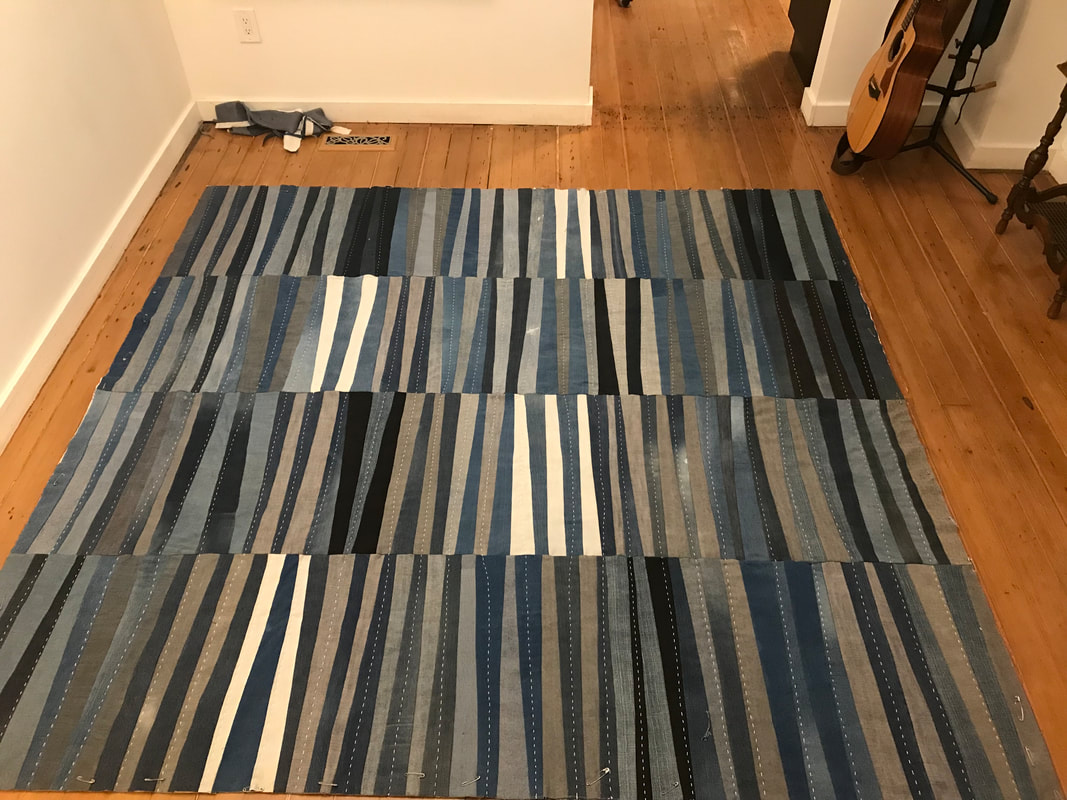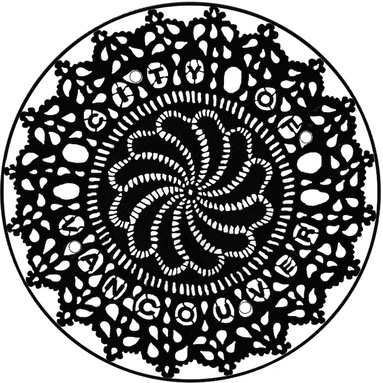 Sanitary Doily, a finalist in the City's sewer-cover competition.
Sanitary Doily, a finalist in the City's sewer-cover competition. But I couldn't resist designing my tribute to a traditional handmade use-object's chief function: to conceal and pretty-up unsightly evidence of everyday life. Sanitary Doily is a stink bid but damn if it didn't make it as a finalist among the more than 1,000 entries in the City's open competition.
The design borrows from actual patterns, with the swirling core used here to convey a flushing toilet action. (In retrospect, the swirl should be reversed. This is not Australia.) The surrounding negative spaces are reshaped as random water droplets while just managing to maintain pattern integrity. It is intended to be whimsically informative, enhanced by the prominent inclusion of the City of Vancouver into the lacework. It is conceived as an imperfect, pleasing intervention in a manufactured landscape.
Just what two designs will be selected for the storm sewer and sanitary sewer covers will be announced this Saturday afternoon, June 1, at the Ironclad Art Manhole Design Challenge exhibit at the Interurban Gallery, 1 East Hastings at Carrall Street. (The exhibit of all design entries is now on display through June 8, 1-5 p.m. where you can vote for your favourite, or do that here.)
I did a little fisty air punch when I was notified that Sanitary Doily was not rejected out of hand, mainly because I see it as a small victory in our culture where exquisitely handmade lacework can be found heaped in plastic bins at local thrift shops, at 50 cents each. I know how much dedication is required to make a doily because after decades of practice I can just manage to crochet a crude one. To me, the way we treat those little spiderwebby lace fragments of yore is symbolic of the level of honour and value attributed to that last generation of women who mastered that domestic art form. Not so much.
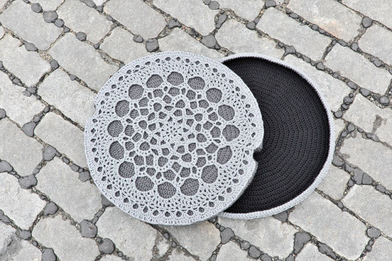 Image from junk-culture.com
Image from junk-culture.com Meanwhile, I'm left thinking about what's next for Sanitary Doily. It won't be cast in iron any time soon, but I'm kind of loving the idea of re-injecting it with a little of the original use-object value, like Brooklyn artist Ronda Smith's NYC sewer cover throw pillows. (Or maybe it's just her pitch I love: "Who wants to snuggle up to a SMALL NYC SEWER manhole cover??? I DO!!"
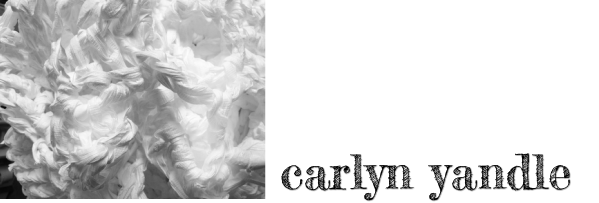
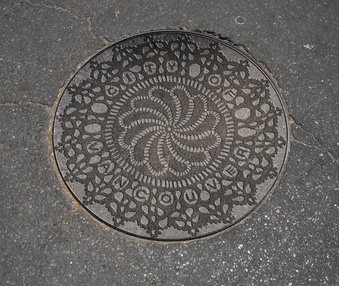
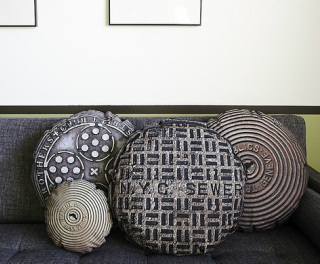
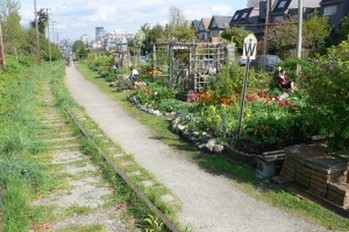
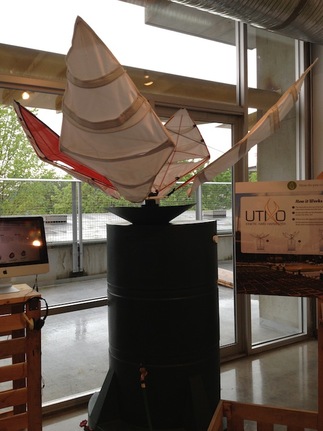
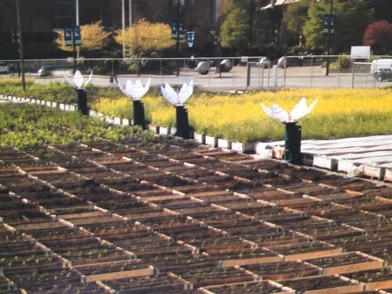
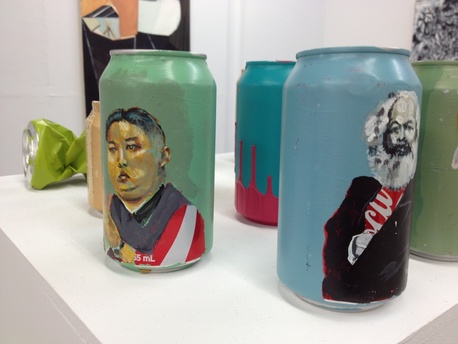
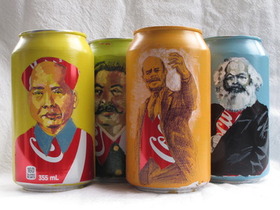

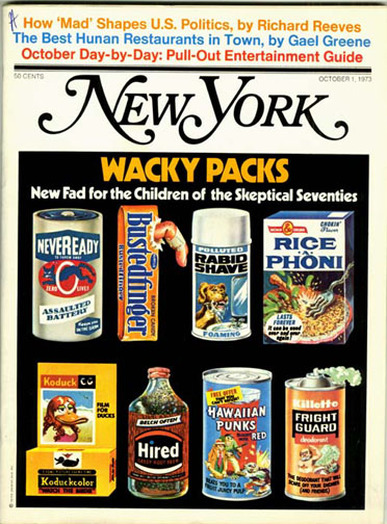
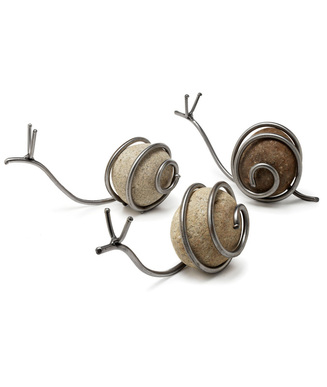
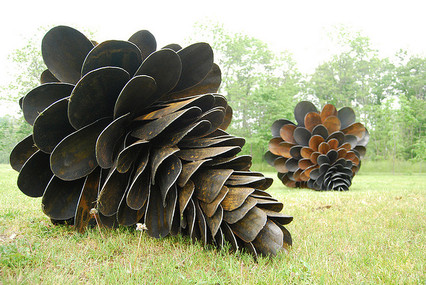

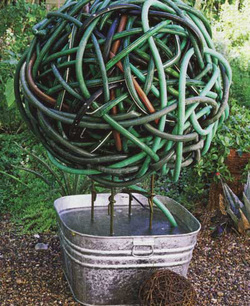
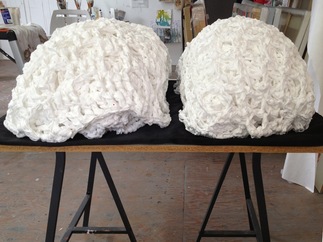
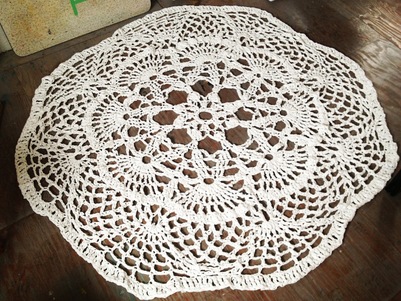
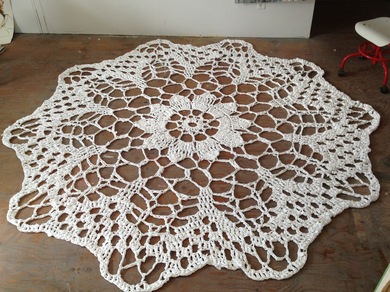
 RSS Feed
RSS Feed

